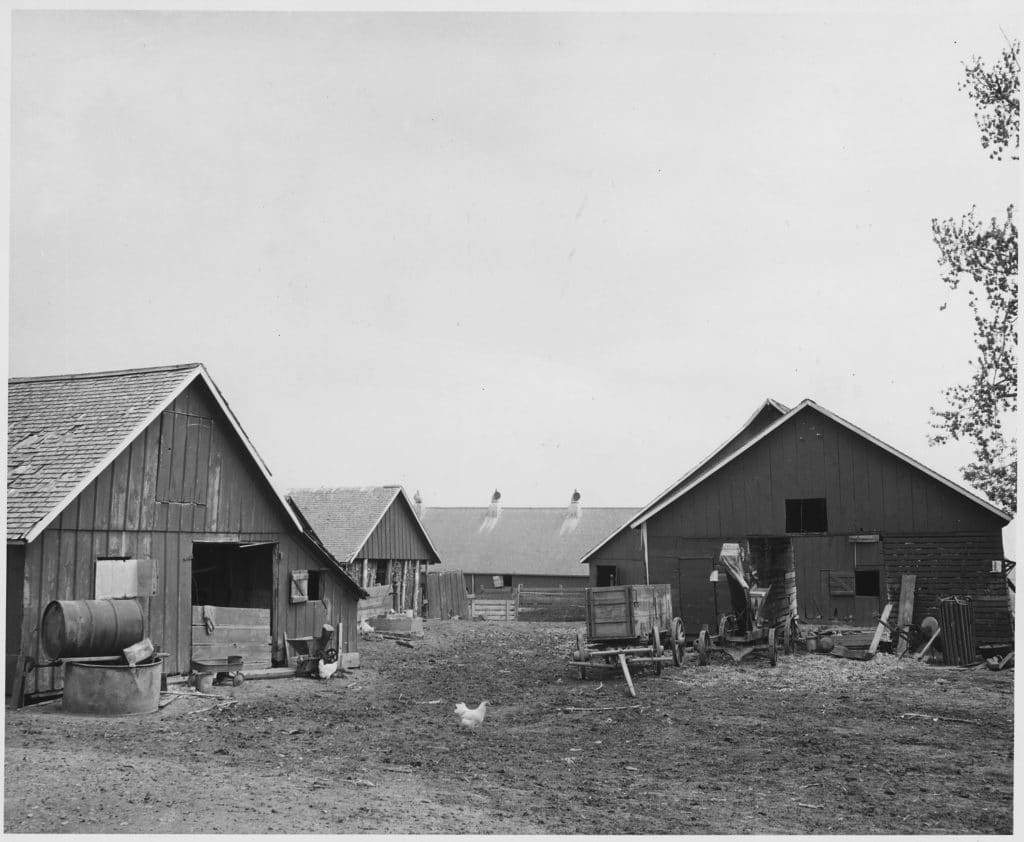This post was guest authored by Tykeisa Nesbitt.

At the beginning of the 20th century, African Americans owned at least 14 million acres of land. By the 21st century, 90 percent of the land had been stolen from them. Now, African Americans only own 1.1 million acres of farmland and are part owners of another 1.07 million acres. Across a century, white farmers and landowners developed multiple ways to take African Americans’ land, using methods such as heirs property, tax sales, and Torrens Acts.
To understand the magnitude of the land taken, one must examine the extreme measures taken by those who captured the land from African American landowners. Both laws and practices allowed white landowners, farmers, and developers to manipulate the system so they could gain control over the land owned by African American farmers and homeowners.
The ways people were allowed to take land differed by state, with each having its own approach to scheme Black people out of their land. Heirs property, however, was a method used across all of them. In most cases, Black people did not have wills that would transfer land from one person to another after the death of the rightful owner. When there was no will involved, the land was divided equally amongst all of the known descendants. As those descendants began to pass away, the land would keep being divided by their descendants.
Over generations, the number of owners would become substantial. This created challenges for the landowners, according to Modern Farmer, since using “heirs property as collateral on a mortgage, to subdivide it, to develop it—and any number of other things of a legally binding nature—is difficult without first identifying and tracking down every heir, and gaining consent from each one.” It eventually became easy enough for other people to come in and take control of the land, especially when every family member could not be found to seek permission for selling the land. So even if some members of the family wanted to keep the land, other members could choose to sell it. White developers would end up preying on family miscommunication and taking control of the land.
The next method used to scheme Black people out of their land was tax sales. Tax sales were a way that the land could be taken from its owners and auctioned off. In these cases, Black people would want to stay on their land instead of selling it, but most of them lived on a fixed income. Consequently, many of these homeowners eventually found themselves unable to afford their annual property taxes. Once they were in default, the county would put the property up for auction. This was something that developers used as an advantage when they wanted to access land families didn’t want to sell.
A third method was called the Torrens Acts. The Torrens Acts was based off of the Torrens Systems, which was first used 1858 in Australia. It was developed by Sir Robert Torrens for the purpose of “enhancing the certainty of title to land and to simplify dealings involving land.” When introduced in the United States, the Torrens Act was supposed to be used to simplify title registry. Instead, it became a loophole that allowed third parties to forcibly remove families from their property through partition sales. Partition sales take place when one of a property’s owners wants to sell but the others don’t. The Torrens Act and related rules allowed sales to take place without the notification of family members or other co-owners of the land. Once the sale was made, the rules associated with the Torrens Act protected the buyer from any legal recourse by the owners who did not know about or agree to the sale.
The cumulative effect of these methods used over a century to steal land or otherwise manipulate families out of their land was devastating. In Mississippi alone, the land stolen from 1950 to 1964 totaled up to 800,000 acres. A research team calculated the value of the stolen land in Mississippi to be $3.7 billion to $6.6 billion in today’s dollars. And these estimates of white wealth extraction from African Americans through land theft are just one state.

Today in the U.S., 43.4% of Black Americans are homeowners, compared with 72.1% of white people, 51.1% of the Latinx population, and 53% of AAPI/Indigenous/Other. Homeownership is the biggest contributor to wealth and wealth transfer between generations. History shows us that Black homeownership has been stifled at every turn. While redlining may be a more well-known part of the story, the deceptive practices I’ve explored here were just as effective, from the Torrens Act to heirs’ property and partition sales.
Black land theft is not a topic heavily discussed, but like redlining, it allows people to see that African Americans falling “behind” financially is not because they don’t try, but because every time they had a chance to get ahead laws, rules, regulations, and those with power used the system to bend the rules to take from them. When it comes to Black land theft, it wasn’t just government institutions, it was white people who had the money and knew the laws they could use to swindle African American landowners. The rules and laws in place allowed white people to use government rules and institutions to not only steal land but enrich themselves once they got a hold of it. And because this massive theft was accomplished through thousands of small transactions over decades, it was easy for the rest of us to look the other way.
Black land theft today isn’t as prevalent and blatant, and new wealth extraction schemes have gained prominence. But what the story of Black land theft in the 20th century tells us is that if no one is asking questions about what thousands of small financial transactions add up to in a nation that was founded on slavery, then we are positioning ourselves – by design or not – to miss the next wealth extraction schemes for decades as well. In a country where the typical white family still has eight times the wealth of the typical Black family, and the racial wealth divide is getting worse, we can’t afford not to ask these questions.
Black land theft happened from the 20th century to the 21st century, and it had major impacts on the lives of African American landowners and their descendants. Stephanie Hagans, whose family lost 35 acres in Matthews, NC in 1942, explains, “When they steal your land, they steal your future.” We don’t know what life would be like if all that land hadn’t been stolen, but African Americans’ financial futures might have looked very different.
This year, Tykeisa has interned on the Isoureconomyfair.org project led by Take on Wall Street’s popular education manager Ericka Taylor. To learn more about the hidden history of Black wealth extraction in the United States, visit the site.
Learn More:
- “ ‘When They Steal Your Land, They Steal Your Future,’ “ by Todd Lewan, Dolores Barclay, LA Times, December 2, 2001.
- “The Great Land Robbery: The shameful story of how 1 million black families have been ripped from their farms,” Vann R. Newkirk II, The Atlantic, September 29, 2019.
- “How Did African-American Farmers Lose 90 percent of Their Land?,” Brian Barth, Modern Farmer, August 19, 2019.
- Stafne Law Advocacy & Consulting. “Torrens Act.” Stafenelaw.com. 12 April 2022.
- “Disparities in Wealth by Race and Ethnicity in the 2019 Survey of Consumer Finances,” Neil Bhutta, Andrew C. Chang, Lisa J. Dettling, and Joanne W. Hsu with assistance from Julia Hewitt, Board of Governors of the Federal Reserve System, September 28, 2020

Leave a Reply